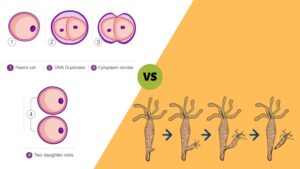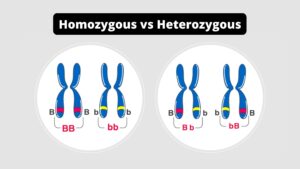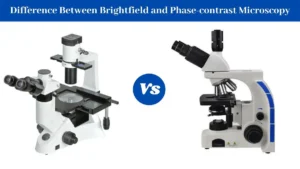Neisseria meningitidis
Neisseria meningitidis, also known as meningococcus is a Gram-negative bacterium which may cause meningitis or other forms of meningococcal infection like meningococcemia, which is life-threatening sepsis. The bacterium is described as a coccus due to the fact that it is round and, more specifically, is a diplococcus due to the tendency of it to create pairs.
Around 10 percent of adults are carriers of the bacteria that reside in their nasal passages. Since it is a solely human pathogen and the most prevalent cause of bacterial meningitis among young and older adults, causing impairment to development and death in around 10 percent of cases. It is the sole form of bacterial meningitis that is known to be prevalent, mostly within Africa as well as Asia. It can be found everywhere in both endemic and epidemic form.
N. meningitidis can be spread by respiratory secretions and saliva when you cough, sneeze, kissing chewing on toys or even by sharing the source of water. It is also believed to be transmitted via oral sex and can cause urinary tract inflammation in males. It infects the host cells by adhering to them by forming long thin extensions known as pili and the surface exposed protein Opa or Opc and is associated with several factors that cause virulence.
Neisseria gonorrhoeae
Neisseria gonorrhoeae also known by the name gonococcus (singular) also known as gonococci (plural) is a type of Gram-negative diplococci that was discovered from Albert Neisser in 1879. It is responsible for the sexually transmitted genitourinary disease and gonorrhea, as well as other types of gonococcal disease such as disseminated gonorrhoea as well as septic arthritis and gonococcal ophthalmia neonatorum.
It is oxidase positive as well as aerobic, and can withstand the phagocytosis process and is found in neutrophils. The cultivation process requires carbon dioxide supplements and an enriched the agar (chocolate agar) with different antimicrobials (Thayer-Martin). It displays antigenic variation by genetic recombination and surface proteins, which interact in the body’s immune system.
Sexual transmission can be accomplished via vaginal, anal or oral sexual contact. Sexual transmission can be stopped by using barrier protection. Perinatal transmission is possible during the birth process, and can be prevented by the treatment with antibiotics of the mother prior to birth, and by applying anti-bacterial eye gel to the eye of the baby. Following an episode of gonococcal infections, people do not become immune against future infections. Reinfection is possible because of N. gonococcus’ ability to defy the immune system through modifying the surface protein.
N. Gonorrhoeae is a cause of infections of the genitals, the throat, and the eyes. An asymptomatic infection can be found for females and males. Infections that are not treated can extend to the rest in the body (disseminated the gonorrhea disease) particularly the joints (septic arthritis). In women, untreated infections can result in pelvic inflammatory disease, and possibly infertility because of the scarring. Diagnostic tests include Gram stain, culture or tests using nucleic acid like polymerase chain reaction(PCR), of the urinary sample or a urethral sample or cervical swabs. Chlamydia co-testing as well as testing to determine the presence of other STIs is suggested due to the high incidence of co-infection.
Differences between Neisseria meningitidis and Neisseria gonorrhoeae
| Character | Neisseria gonorrhoeae | Neisseria meningitidis |
| Commonly Called | Gonococcus | Meningococcus |
| Causative agent | Sexually transmitted diseases- Gonorrhoea | Causes a variety of ailments that are referred to as Meningococcal infection that is invasive. The most frequent is cerebrospinal meningitis. |
| Cell Morphology | Kidneys are shaped, with apposing ends concave. | Semicircular diplococcus with flat apposing end. |
| Capsule | Absent | Capsule is present , which is anti-phagocytic, and a major in virulence factors. |
| Pili | N. gonorrhoeae is most commonly moved using one pilus that retracts. | N. meningitidis is most commonly moved with four pili. |
| Plasmids | Typically, plasmids are coding for genes that are resistant to drugs. | Rarely, plasmids are present. |
| Form | Most often, they are found inintracellular form | Exist both within and extra*Extracellular forms |
| Movement | Movement of N. gonorrhoeae is slower. | Movement of N. meningitidis is faster when there is the greater number of pili that retract. |
| Growth on Blood Agar | N. gonorrhoeae grows less well on blood agar than. meningitidis. | N. meningitidis is more effective on blood agar more than N. gonorrhoeae. |
| Medium of Culture | Contain antimicrobials that block the growth of other organisms than those that belong to. gonorrhoeae. Typically, vancomycin (inhibits Gram-positive bacteria) as well as colistin (inhibits Gram-negative bacteria such as commonly-occurring Neisseria spp. ) Trimethoprim (inhibits the swarming effect from Proteus spp.) and nystatin and amphotericin A (antifungal agent). | Blood agar, trypticase agar, chocolate supplemented Agar, and Mueller-Hinton. |
| Growth Rate | More sluggish than Meningococcus. | Slow |
| Fastidious | The most attentive of all Neisseria Spp. | In comparison, they are less meticulous. |
| Colony morphology | N. gonorrhoeae form smooth, circular with a uniform, moist grey/brown colonies that have greenish hue underneath on the primary isolation medium.It is usually irregular in margin. | N. meningitides will form round and smooth and moist smooth, round, uniformhuge grey/brown colonies, with sparkling surfaces and rounded edges. |
| Sugar Fermentation | Produce acid using glucose alone. | Produce acid from maltose and glucose. |
| Maltose Fermentation | No | Yes |
| Nitrite Reduction | N. gonorrhoeae doesn’t reduce nitrites. | N. meningitidis is a nitrite-reducing agent in lower concentrations. |
| Autolysis | May autolyze | Autolyse |
| Glutamylaminotransferase | Non-producer | Producer |
| B-Lactamase Production | Common | Rare |
| Antigen Heterogeneity | There is more to meningococci than it does. | Comparatively, less. |
| Grouping | The auxotyping process detects specific nutrients. | The serogroup is determined by its capsular antigen of the lipopolysaccharide. |
| Normal Flora | It is not considered to be a normal species of flora. | The majority of people are not susceptible to Neisseria meningitidis in the upper respiratory tract. |
| Pathogen | It is always an infectious pathogen. | It could or might not be pathogenic. |
| Portal of Entry | Genital | Respiratory |
| Site of Infection | Primarily, it causes infections of the anogenital tract. | Colonizes the respiratory tract of the upper in a commensal manner and, occasionally, infiltrates thecan cause systemic diseases. |
| Virulence Factors | Pili IgA proteases , and the production of lipopolysaccharide-derived endotoxin. | LPS capsule IgA protease, and iron use from transferrin. |
| Related Conditions | N. gonorrhoeae is also a cause of conjunctiv and pharyngitis. It can also cause proctitis, prostatitis, urethritis, and orchitis. | Meningitis is a cause and can be accompanied by other forms of meningococcal diseases, such as meningococcemia, which is a life-threatening condition. |
| Specimens | Swabs of transport from the endocervix the pharynx, rectum and urethra conjunctiva and blood joints fluids, and aspirates, and skin lesions. | Cerebrospinal liquid (CSF) as well as blood swabs the skin and nasopharynx for lesions. |
| Exudates that are inflammatory (pus) | In higher percentages | In smaller number |
| Prevalence and Mortality | N.gonorrhoeaeinfections have a high incidence and a low rate of mortality. | N. meningitidis has an extremely low rate of incidence, and a high mortality. |
| Superbug | Considered as “superbug” | Not considered to be “superbug” |
| Vaccines | No | Serogroups B, A C, Y, meningococcal infection W-135 are preventable with vaccinations. |



